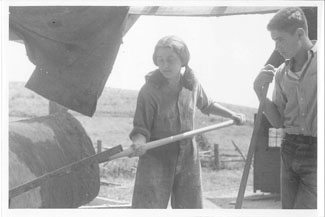
11 Apr Working Under the Star – Part II
Part II: Who were these AFSC people, anyway?
In Part I we discussed replacing the old wooden American Friends Service Committee (AFSC) medallion with the new ceramic one. I hope by now you have gone by Paul Garrett’s shop, admired it, and told Lisa TeviaClark and Jim Clark what a fine job they did making the piece.
Now we will learn who these AFSC people were, something about their work, and why the medallion was put in the stone gable of the shop. As the name “Friends” implies, the AFSC is a Quaker organization founded in 1917 that provided alternative service opportunity for youth who, for religious reasons, declined military service as conscientious objectors. These work groups, which consisted primarily of young adults, were assigned throughout the country where need arose.
Their first known contact at the Folk School was in the summer of 1928 when a volunteer reported, at Mrs. Campbell’s request, to supplement the work staff at the newly formed school. (More about this person in Part III).
Since this first experience was highly successful, as you will see, Mrs. Campbell sought help from the AFSC again in the closing years of WW II as local resources of both people and money were scarce.
When I researched the AFSC logo on-line to obtain its details, I also found contact information for Don Davis, Archivist, at the AFSC headquarters in Philadelphia. One phone call and Don responded enthusiastically that he would search for any records on the Folk School. The next day he sent an e-mail with attachments of team rosters, weekly reports, evaluation reports, and photographs of the work camps. The big surprise was that the summer of 1946 was not the first camp. They came in 1945 and 1946! With this information, David Brose found additional references to the work camps, with photos, in the Folk School Newsletter #29 dated October, 1947. From these two sources a heart warming story unfolded.
In the summer of 1945, an AFSC work group consisting of 8 college-age women with a chaperone couple and a dietitian arrived at the Folk School and set up head quarters in the vacant Rock House. They were from the north east and mid west. The work camp was from June 25 through August 20, 1945, or about eight weeks. The advertisement gave a brief history of the Folk School, a description of the agreed upon work at the School and in the community. Cost was $90 per camper which included all expenses except travel to and from the School. The campers were asked to bring their Ration Books for purchase of sugar, canned goods, and meat.
The work project description stated that the School woodworking shop burned in December of 1944, and that campers would assist in building a more permanent and adequate stone building. They were also to help with farm work, canning and painting at the Creamery. The opening week would be threshing time for the community. (Remember, the AFSC workers were all girls.)
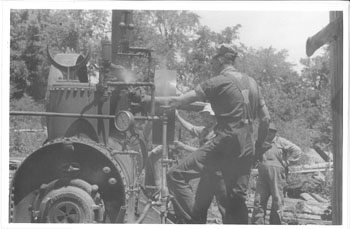
Oscar Cantrell (the first Folk School Blacksmith) operating the steam driven threshing and bailing machine
Georg Bidstrup directed the work. Frank Hogan and Cecil Tipton assisted with construction and farm work also. In the second week when work was to start on the shop, the campers noted in their morning mediation that they would be joining people all over Europe that morning in clearing away charred rubble to rebuild. The School staff and community members often remarked how well these girls worked whether with shovel, wheel barrow, mixing cement, or in the fields.
In addition to the project work, the campers participated in music, dancing, woodcarving, hiking, and picnics with School staff. Louise Pitman helped coordinate their school activities and worship.
In the construction work, one camper was impressed with the continual use of available local supplies such as gravel from the creek, rocks from the fields, and lumber sawn at the School’s saw mill. She said we are “using nature’s gifts to produce a useful addition to the community”.
As they visited local churches and community homes, they noted the interesting small cabin-like houses, scattered up and down the mountains, that seemed to be placed to capture a particular view. The cabins appeared to have been part of the countryside for centuries. One camper said that perhaps they fulfilled Frank Lloyd Wright’s image of “organic architecture”: belonging to nature yet fulfilling the daily needs of the people.
By the end of the final week, the new shop stone walls were up, and the concrete floor poured. The School staff turned out on the last day to see the final stone set and held a simple ceremony concluded with the singing of “Auld Lang Syne”. The final report stated the campers put in 280 man-hours threshing and 1560 man-hours on the new shop. Is “man”-hours the proper term?
The next summer, the AFSC provided another work camp, at the School’s request, to finish the new woodshop. It ran from June 24 through August 19, 1946. General arrangements were similar to the previous year. Again, a chaperoning couple, with children, a dietician, nine females and one male (Mexican) made up the initial crew. None of the 1946 crew had been on the 1945 crew. Ration Books were still required.
The new crew was impressed with the work on the shop the previous crew had accomplished and the community respect they had earned.
Then, they were disappointed to learn that they would not be able to work on the woodshop as planned. All materials required to finish the shop, such as nails, windows, roofing, and hardware, were commercially supplied, and not available. Additionally, the School had little money to purchase them anyway.
They worked faithfully, however, for several weeks on assigned tasks. They cleaned and painted the Rock House inside and out, weeded the yard, and pruned the overgrown shrubbery to make the house ready for the new Director (D. F. Folger) who would arrive in about six months to take Olive Campbell’s place upon her retirement. They painted the dairy and various other buildings, harvested hay, threshed grain, and worked in the garden. Again, their work was quite good and received compliments from the staff and locals as well. The problem was they were finishing the assigned work too fast. Paint had run out and their hopes were dwindling to leave a “monument” to their work as the previous camp had done.
In week five, the crew formed a committee, went to Georg Bidstrup and stated, “We want more work”. Georg obliged them by announcing the School would break ground for a new forge shop. Morale was boosted but nervous concern existed as to whether they could finish the stone work in the time remaining.
The team responded by working longer hours and picking up the pace. Frank Hogan of the School staff became the star always knowing exactly what to do. They began with digging the foundation by hand, then erecting forms, fitting the rocks, and pouring concrete in the forms. Georg and Marguerite provided encouragement and the work progressed well.
After the team finally had more work than they thought they could do, the paint arrived for the Creamery. A small group was sent to paint, but the outlook was still fair to finish the forge walls by the end of camp. The team recruited some locals to help with the painting at the Creamery and it was finished. Wayne Holland, general manager of the Creamery, discussed continuing the use of local volunteers to help maintain the facility. All campers then returned for one last run at the forge.
On the beginning of the last week, the campers decided to have “Starvation Sunday” and ate only bread, water and onion soup which was said to be the typical Sunday fare for a Parisian family. They experienced the feeling of hunger of others affected by the War and figured they saved $7.60 from the budget to which they donated to make up $15.00 to send to CARE for a bundle of food for some European family.
In the final week, work was heavy but the shop walls and two gables were completed, even the kitchen crew came down to help out the last two days. As the final gable was being completed, Georg Bidstrup come by and was so impressed with the results that he suggested the AFSC emblem be set in the center of the front gable over the arched doorway. Two campers worked hard and produced “a fine plaque of wood painted in the right colors” to be placed in the gable. On Sunday afternoon, August 8, 1946, a little ceremony was held in front of the building and was attended by the campers, School staff and others who had worked on the building. Following remarks by Georg and the AFSC camp Director, a camper “unveiled the plaque which stands out beautifully in the stone wall”.
Thus, the 1946 camp closed successfully, also. As far as I can tell, the AFSC has not sent a work group back since then. Perhaps it is time…
The AFSC was awarded a Nobel Prize for Peace in 1947 as a result of its wartime and post-war relief efforts. Over a decade ago, a lady probably in her 60’s came back to Folk School for a week of class and told Jan Davidson she was one of those Quaker girls who worked on the forge building in 1946. I happened to sit by her at a meal and was privileged to hear some of her memories. She missed the people that she remembered, as they were gone. She appreciated the recent renovations to Rock House as she stayed there again, and she was pleased with the progress the school has made. I made a huge mistake by not obtaining her name and contact information. She would be in her 80’s now, I estimate. If anyone knows anything about her, (or any other person connected with those two camps or has any related information), we would appreciate your letting us know.
In the next blog, Part III, we will look at two of the Folk School’s most outstanding staff members who came to the School directly as a result of their AFSC affiliation—and stayed.
Read the full “Working Under the Star” Story




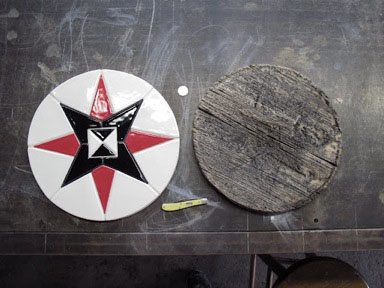
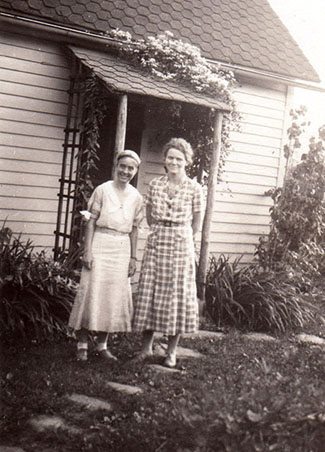
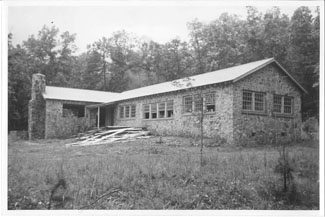
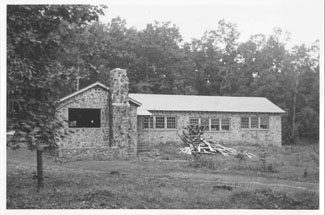
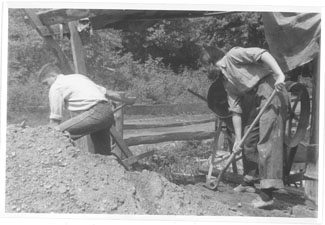
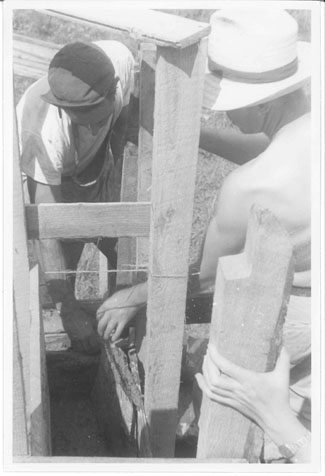
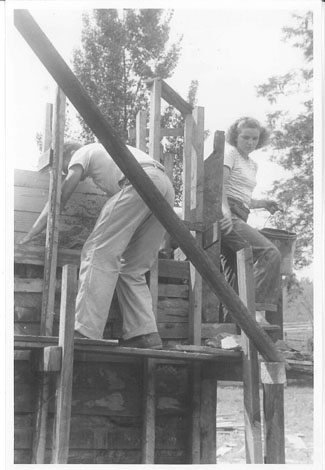
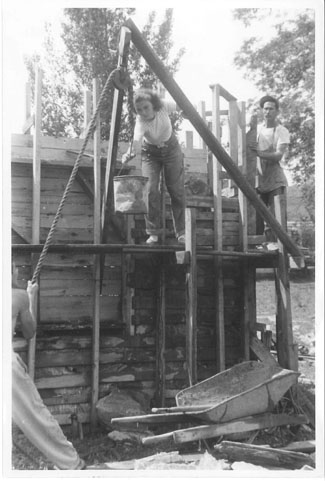
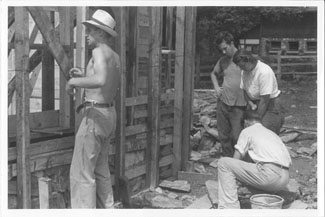
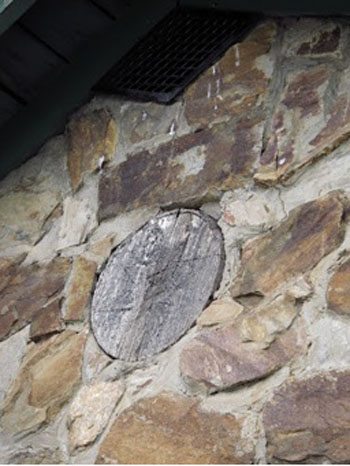
tipper
Posted at 07:42h, 17 AprilThe whole story gives me goose bumps! I love how they thought of those who were suffering overseas-while they were working right here in our little community of Brasstown. GREAT job Rooney!